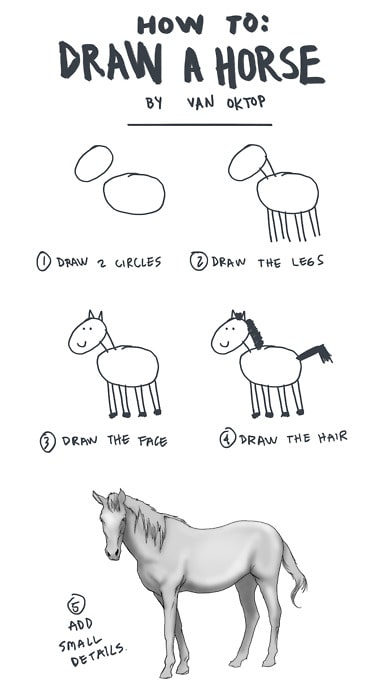Thailand ETCetera: Month 0
There are a lot of how-to-build-a-business articles around the web. Most of them are the business version of this:

There’s a lot of stuff missing and that’s why I want to start from the beginning—who we are and what skills we bring to the table.
First of all, there are three of us. I met both Zine and Ryan while I was going to university in Thailand. I met Zine in late 2009 when I stayed at the hotel where she was working. I met Ryan in 2012 at the AUA school in Bangkok where we were both studying Thai language.
I started my career in computer support roles. After about ten years of that I decided to go to university, and figured Thailand would be a lot cheaper. I started learning how to build websites in pursuit of a few business ideas. The businesses ultimately failed but those skills allowed me to get a job with a local company doing web development, marketing, and search engine optimisation. I’ve worked as a web developer since; about five years all told.
The hotel Zine was working at was called Phranakorn Nornlen. She worked reception but was occasionally asked to lead tours for hotel guests. Spending so much time with the guests allowed her to build a lot of relationships; these relationships would be the foundation of her freelance tour business. In 2014 she attended guide school at Chiang Mai University to become a licenced guide. Guide school would allow her to build a lot of relationships with other guides and also with service providers in the hospitality industry. In 2017 she attended the Traditional Thai Crafts Cooking School for Women at the Grand Palace which meant more relationships, this time in the food services industry.
Ryan grew up in Chicago and is a dual Thai/US citizen. He went to university for a degree in teaching, taught school in Illinois for two years before moving to Thailand to study Thai language and pursue opportunities in adult second-language learning in Bangkok. He has been acting director of AUA’s Thai program for 5 years and, as such, has made many relationships. Being the head of a language program has also given him a lot of experience in office organization and management.
Zine has always struggled with marketing her tours and Ryan and I have had recent malfunctions with our day-jobs. I flew to Thailand and we met at a hole-in-the-wall Indian restaurant in Bangkok and decided we’d turn Zine’s freelance tour business into a real business. We decided to continue offering the services as Zine had always offered them, but change the pricing and the invoicing.
We knew the product was good, all of Zine’s clients recommend her to their friends and family—in fact, that’s how she has gotten about 90% of her new clients. She’s great at what she does and every guest tells about it when they return home. The thing is, if this is going to be a proper business, it’s going to need some backend processes in place. We’ll need to increase the number of groups Zine takes on tour each year, which means marketing. We’ll need to send invoices and keep the books, which means invoicing software, accounting software, payment processors, taxes. We’ll need to incorporate if we were doing all this business stuff. Insurance is probably a good idea too.
Zine will continue doing what she’s always done, building great itineraries and arranging great experiences. Ryan will do customer service, invoicing, and banking. I will be responsible for marketing. I’m sure there will be a lot of crossover between Ryan and I due to skill set and timezones, but we thought it would be good to think about roles this way.
We had a decent outline of what this would look like but needed to know how it would work if it was going to make us a living. Using data from groups Zine’d toured with in the past, we put together spreadsheets and played with the numbers; average group size, price per day, price per customer, and every other way we could think to price the tours. We finally got the numbers to something we were happy with. We know the numbers we need for this to be successful, but can we hit those numbers?
We talked about marketing strategy, standard operating procedures, incorporating in Thailand versus the US, what the customer flow will look like from beginning to end—every detail we could think of. We also discussed how to know when we’d failed. Based on the numbers in the spreadsheet we figure 10 invoiced customers in one year. That seems to be a reasonable number to show that the market wants what we are offering and that our marketing efforts are working. If we can hit that, we’ll continue, if not, we’ll shut it down.
With this initial understanding of where we were and where we wanted to go, I flew back to the States to get started.